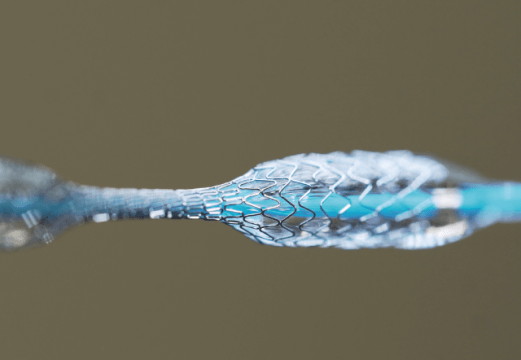Original title: The Single-centre Experience of the Supra-arch Chimney Technique in Endovascular Repair of Type B Aortic Dissections. Reference: Y. Zhu et al. European Journal of Vascular and Endovascular Surgery Volume 45 Issue 6 June/2013.
Endovascular repair of type B aortic dissection (TEVAR) involving the arch, requires special techniques to preserve supra aortic vessels as fenestrated prostheses or stents in Chimney.
The chimney technique was originally described to treat abdominal aortic aneurysms but can also be used in the thoracic aorta. This study represents one of the largest series with this technique in the context of type B aortic dissection. Between 2006 and 2011 thoracic aorta was treated using endovascular techniques in 338 patients in a facility, of which 34 used the Chimney technique to protect supra aortic vessels, (3 brachiocephalic trunks, 8 left carotid and 23 left subclavian). The reason for using this technique was a proximal anchor point less than 15 mm with high surgical risk that contradicted a conventional or hybrid approach.
Technical success was 82%, (28/34), showing a 15% (5/34) of type 1 leak immediate that decreased (n = 3) or disappeared (n = 2) after re-dilate or the implant of another stent. None of these leaks were observed in the follow-up CT scan within 3 months. There were no deaths or strokes peri procedure and after one year no aortic-related death was observed.
Conclusion:
Endovascular repair of thoracic aorta with the Chimney technique to preserve supra aortic vessels is a minimally invasive option with good medium-term results in patients with type B dissection discarded from surgery.
Editorial Comment:
This technique adds one more option for these high-risk patients. Historically, once discarded from surgery, there was only good control of blood pressure on offer. We can use covered stents as well as self-expanding stents or an expandable balloon for the chimneys, although the latter seem more desirable as their larger radial force prevents them from being compressed by the stent.
SOLACI.ORG





